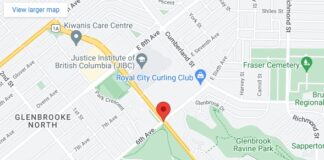STUNNED is the word being used by 9-1-1 call dispatchers who have been informed that, effective today (Wednesday), 9-1-1 Operators transferring calls to the ambulance service will no longer be waiting on the line with the caller until ambulance dispatchers pick up – a wait that can be many minutes long.
“This decision goes against everything we’ve been trained to do, and every common-sense approach to 9-1-1 service delivery,” says CUPE Local 8911 President Donald Grant. “Until now, our operators have never disconnected before voice contact is made, because our role is to ensure that critical information isn’t lost during the transfer.”
In its media release today, E-Comm said that the change will “free up” call-takers to handle more incoming emergency calls more quickly. But Grant says, this amounts to a stop gap measure when what is urgently required is an immediate infusion of funding support from local governments and development of a new funding model to avoid catastrophic failure. A recent report commissioned by E-Comm by Price Waterhouse Coopers concluded that the organization cannot be successful with an understaffed system, suggesting the current roster of 153 full-time call takers needs to increase by 125 to meet operational demands.
E-Comm further stated that the decision was necessary because 9-1-1 call-takers are not medically trained or authorized to give medical advice.
“This is not about being medically trained—it’s about being on the line and available to reassure callers in distress. We’re talking about human beings experiencing real emergencies, and to abandon them during their time of need is simply unacceptable,” says Grant. “You can imagine the worst-case scenario that can happen while waiting alone on the phone in your time of need.”
Since the inception of the 9-1-1 service in British Columbia and other regions of Canada, protocol has dictated that the dispatcher stays on the line until a service-specific dispatcher is picked up, in this case ambulance. Wednesday’s decision means that British Columbians seeking ambulance assistance will wait in a hold queue. Until ambulance dispatch picks up the call, there will be no one on the line but an automated voice—a wait that, due to severe understaffing, has been more than 20 minutes in some cases.
Dispatchers point out that circumstances during calls change very quickly, making it imperative that operators stay on the line with callers until the ambulance service connects on the line. Should a caller lose consciousness or become unable to respond while waiting for ambulance dispatch to answer, the 9-1-1 Operator would relay any key information received from the caller, phone number, and any location information received from the caller’s phone.













